
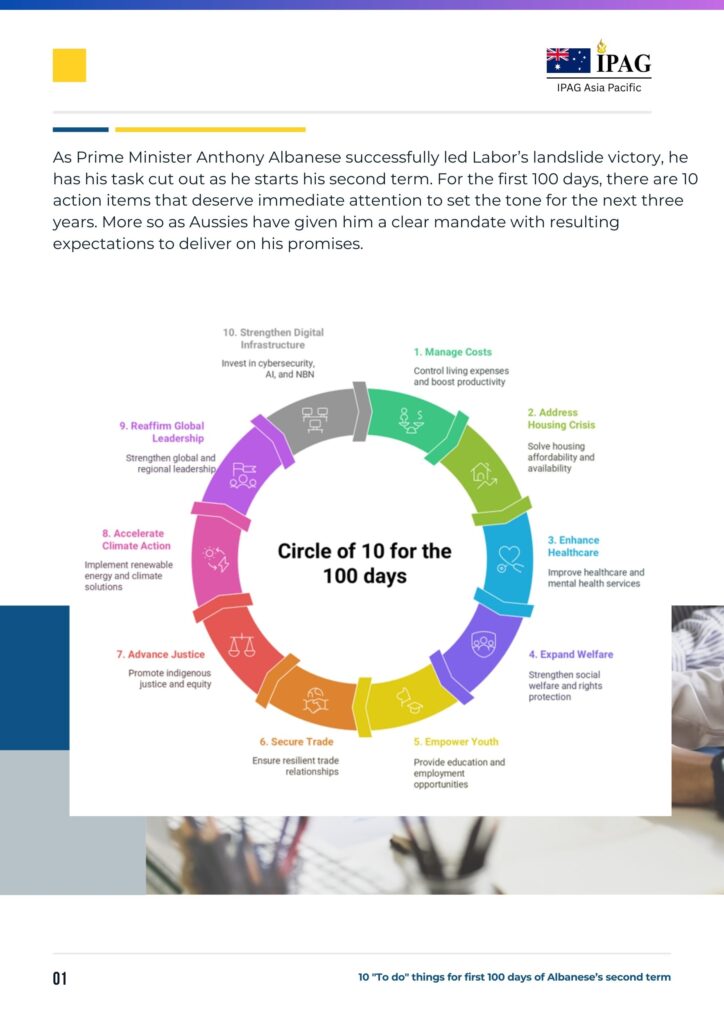
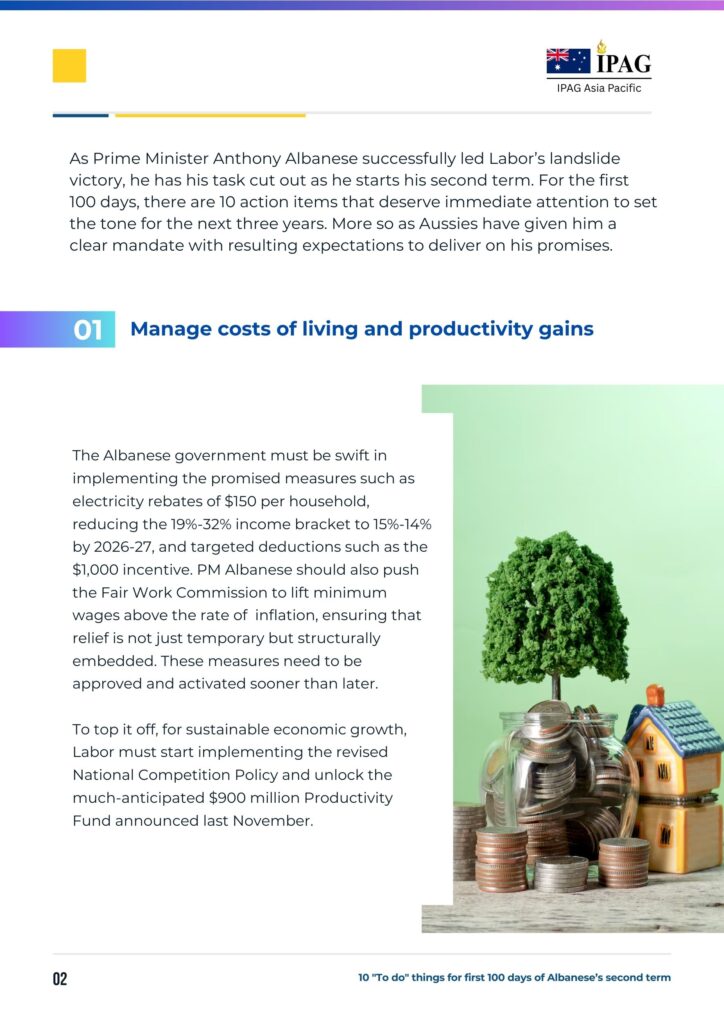
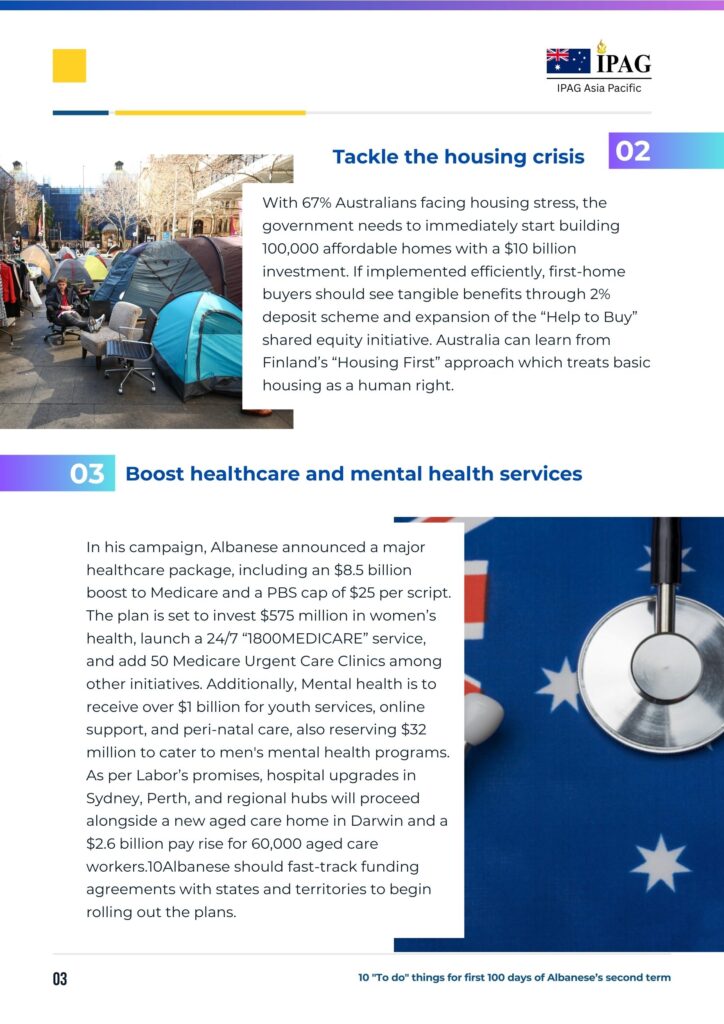
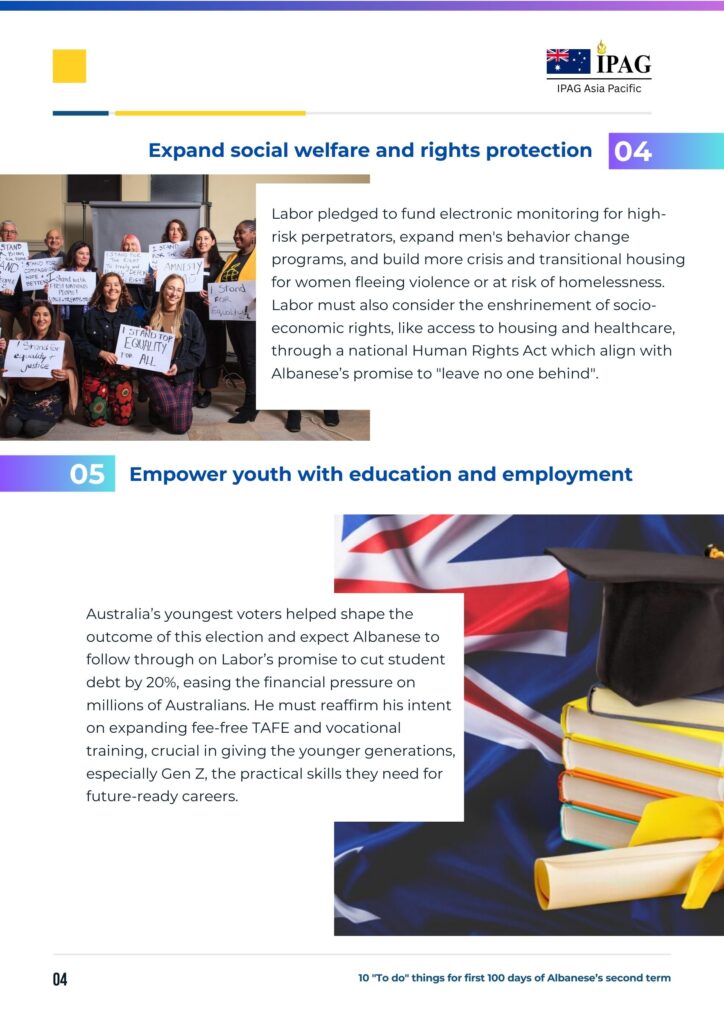
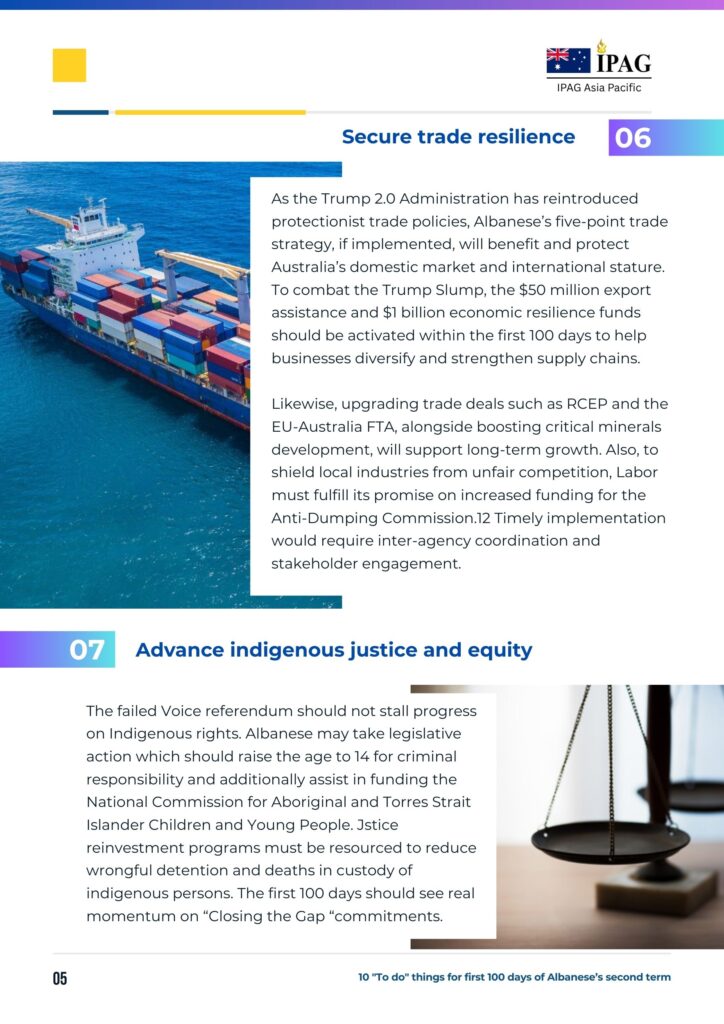
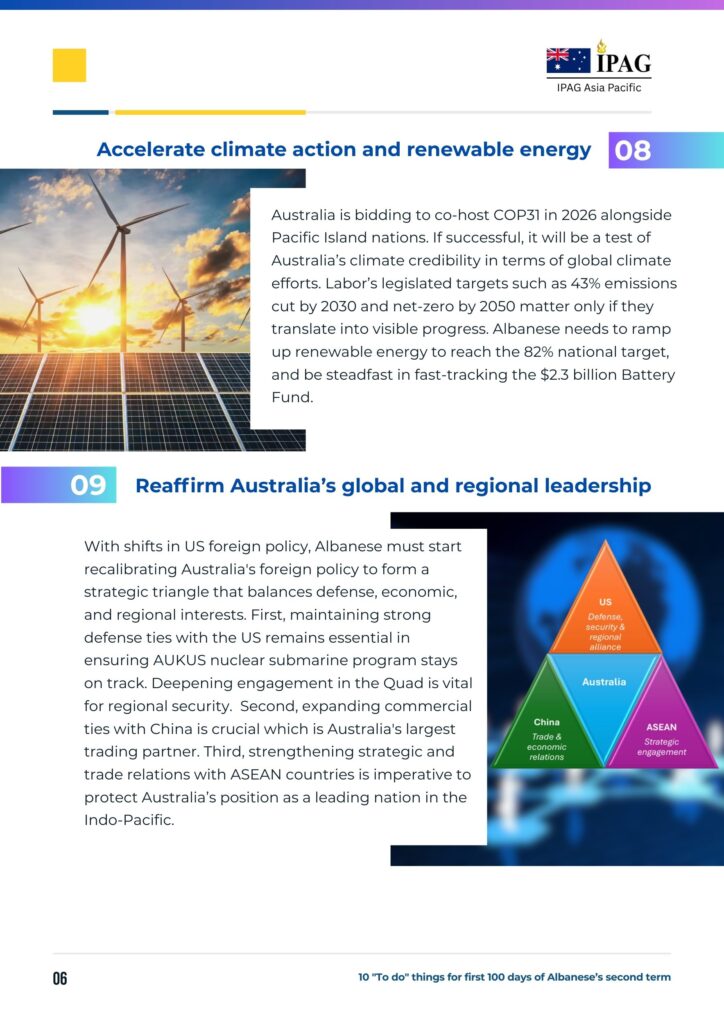
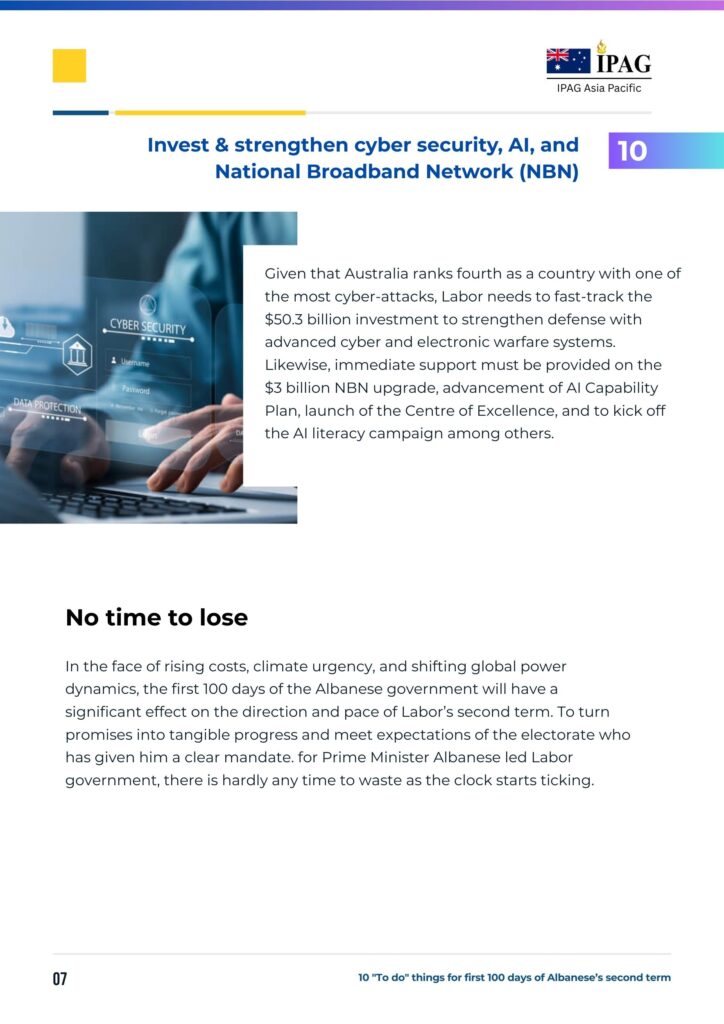
Prof. Syed Munir Khasru
Australian Institute of International Affairs
May 1, 2025
________________________________________________________________________________
In this election, voter attention is focused on issues that influence both daily life and Australia’s long-term direction. This evolving political landscape is being shaped by widespread demand for meaningful change, particularly among younger voters who are expressing growing dissatisfaction with the status quo.
Currently, there is a record 98.2 percent voter enrolment rate, including 92 percent of eligible youth, indicating political engagement is reaching new heights across all demographics. Moreover, Millennials and Gen Z now set to outnumber older generations at the ballot box, and their leading concerns, such as housing, employment, and climate reflect, a strong desire for a political system that is more inclusive and responsive to everyday Australians. Consequently, how the major parties address these challenges will play a decisive role in shaping the country’s direction and earning public trust in this election.
On that note, four trending and emerging issues are likely to be used by voters as a critical lens in making up their mind as to who to vote for: (i) economy, trade & investment (ii) climate & energy (iii) international relations & strategic affairs (iv) digital, cybersecurity, and AI.
Economy, trade, & investment
In the last three years, unemployment has dropped to 3.7 percent, backed by strong public sector hiring and the replacement of outsourced roles. However, this heavy reliance on government-driven job creation has raised concerns about the sustainability of employment growth, especially given the lack of private sector dynamism and investment.
Despite targeted support, real wage growth has not kept pace with inflation and housing costs, leaving many households under pressure. On a lighter note, Stage Three tax cuts were adjusted to support low and middle-income earners, wages in care industries have improved, and broader wage gains remain modest. At the same time, competition reforms and social spending expansions have supported easing cost-of-living burdens, but these measures are yet to deliver the much-anticipated widespread financial relief.
In terms of housing, Labor’s pledge to build 100,000 affordable houses is behind schedule. Housing affordability remains one of Australia’s most urgent issues, worsened by population growth, migration pressures, and rising urban demand. Meanwhile, although inflation has moderated to 2.4 percent due to monetary tightening, household spending support has diminished some of the intended impact.
Australia continues to face skilled labor shortages in sectors like healthcare, tech, and engineering. Despite visa reforms and migration support, bureaucratic delays and weak retention strategies have left critical gaps unfilled. As the country approaches the 2025 election, these unresolved issues have become focal points for public frustration and growing opposition criticism
Climate & energy
From 2022-25, the Australian government committed to 43 percent reduction in greenhouse gas emissions by 2030 and targeted to reach net zero status by 2050. The government also promised to create over 600,000 jobs, primarily in regional areas, cut power bills by $275 annually, and increase renewable energy’s share to 82 percent by 2030.
To further support these goals, it introduced policies such as the Powering Australia Plan, the National EV Strategy, and the Climate Change Act 2022, which made the emissions target legally binding. Furthermore, major investments were made, including $20 billion to modernise the electricity grid, $4 billion for hydrogen technology, and over $200 million for community batteries and solar banks. As a result, emissions fell by 1.7 percent in 2022, though progress was uneven.
Despite these efforts, the Australian Conservation Foundation gave Labor’s climate policy a modest 54 percent, highlighting ongoing tensions between environmental goals and fossil fuel approvals. Moreover, with just 0.01 percent of GDP allocated to disaster risk reduction, stronger commitment and ongoing policy adjustments are needed to meet long-term targets.
Although Australia’s climate targets apply only to domestic emissions and not to those from exported fossil fuels, this creates a significant disconnect in Australia’s climate response. More so, as most coal and gas projects cater to export markets, and while this approach aligns with domestic accounting rules, it complicates global efforts to meet the Paris Agreement’s goal of limiting warming to below two degrees Celsius.
International relations & strategic affairs
After Albanese was elected, Australia launched the Pacific Climate Infrastructure Financing Partnership with AUD$350 million and invested $2.1 billion in maritime security. Aid to the Pacific reached a record $2 billion in 2024-25, with an additional AUD 125 million directed toward renewable energy. Complementing this, Foreign Minister Penny Wong visited all Pacific Islands Forum members, and a Pacific Engagement Visa was introduced. Alongside the adoption of a 0.5 percent GNI aid target and a broader increase in global aid to AUD 4.55 billion, these efforts have helped counter China’s regional influence.
At the same time, Australia strengthened its role in the Quad, prioritizing maritime and cyber cooperation, and launching the $16.5 million Cancer Moonshot initiative. The government also supported the AUKUS partnership by backing local companies to develop advanced electronic warfare technology under Pillar II. Albanese’s government invested over $8 million to boost Australian innovation and strengthen defence capabilities in collaboration with AUKUS allies.
Meanwhile, by 2023, diplomatic relations with China had begun to thaw as China resumed coal and timber imports, lifted its 80% barley tariff, and released Australian journalist Cheng Lei. Prime Minister Albanese’s visit to China, the first by an Australian leader in nearly a decade had marked a turning point in the restoration of a trade relationship worth over AUD 300 billion annually. In broader regional efforts, Australia launched the Southeast Asia Economic Strategy to 2040, hosted a special summit with ASEAN, and committed over $500 million to joint projects in climate, cybersecurity, and education. In the Indian Ocean, Australia expanded its engagement with IORA by co-chairing maritime safety efforts with India and investing in blue economy initiatives.
However, actual aid levels have stagnated at around 0.19 percent of GNI, placing Australia among the least generous OECD donors. In case of defence, though large-scale investments have been announced, many projects such as nuclear submarines and advanced missiles have long lead times. As a result, short-term capability gaps are emerging. For instance, Collins-class submarines will begin retiring in the 2030s, yet their replacements are not expected to be operational for several years.
Digital, Cybersecurity, and AI
Between 2022-25, Labor advanced cybersecurity and digital reforms. For instance, Clare O’Neil’s appointment as Australia’s first dedicated Minister for Cybersecurity indicated a structural shift, improving visibility and coordination. However, centralising cybersecurity under the Department of Home Affairs continues to raise concerns about oversight and contestability.
The government’s flagship 2023-2030 Cyber Security Strategy, backed by nearly $3 billion in funding, introduced a six-shield framework aimed at protecting citizens, SMEs, and critical infrastructure. Complementary reforms included the Cyber Security Act 2024, ransomware reporting mandates, and the introduction of minimum cybersecurity standards for IoT devices. Building on that, Labor also aimed to grow the tech workforce, introducing TAFE programs and grants.
Yet, real-world outcomes remain mixed. Despite an 8 percent rise in tech jobs, Australia still relies heavily on talent from overseas, highlighting the need for local talent development. With only 11,387 core cyber professionals and low female representation, further limits national capacity.
Additionally, digital services saw progress with a new myGov portal and Digital ID, now used by millions of Australians. Meanwhile, a $2.4 billion NBN upgrade improved internet access, especially in regional areas. Likewise, new laws strengthened data protection and banned under-16s from social media, yet major breaches persist. Overall, these changes improved access and trust, though privacy concerns linger.
Despite structural progress, Australia suffered four of its most damaging cyberattacks— Optus, Medibank, Latitude Financial, and MediSecure—between 2022-2024. The attacks compromised millions of personal records and resulted in over $450 million in financial losses. Moreover, Cybersecurity Research & Development investment remains significantly low, despite the sector contributing $9.99B in Gross Value Added. All in all, there is room for improvement.
2025 Election: Major Party Positions
As the 2025 election nears, Australia’s major parties offer distinct visions for the nation’s future. The Greens advocate for net-zero emissions by 2035, Universal Basic Income, rent controls, and major investment in renewables, funded through taxes on polluters and the wealthy. In contrast, Labor focuses on clean energy jobs, digital trade reform, housing delivery, and wage support, while aiming to shift job growth from the public to the private sector. Meanwhile, the Coalition prioritises tax cuts, deregulation, private investment, and stricter migration and national security policies.
Similarly, climate and energy policy draw out a clear divide among the parties. Labor proposes 43% emissions cut by 2030 and net-zero by 2050, supported by renewable expansion and electric vehicle incentives. The Coalition supports a slower transition, continued fossil fuel development, and the introduction of nuclear energy by 2035. On the other hand, the Greens push for the most ambitious targets, including 75% emissions cut by 2030, net-zero by 2035, a complete fossil fuel phase-out, and the use of carbon pricing. Climate policy ratings reflect these positions, with the Greens scoring 98 out of 100, Labor 54 and the Coalition just 1.
Foreign policy approaches also diverge as Labor promotes balanced diplomacy with both the US and China, combined with cautious defense spending and limited climate aid. In contrast, the Coalition adopts a more assertive stance, fully backing AUKUS and emphasizing national security, though this could strain regional relationships. Meanwhile, the Greens call for demilitarization, cancellation of AUKUS, and a stronger focus on peace, aid, and climate diplomacy, although critics doubt the feasibility of this approach.
What lies ahead?
Australia’s post-election outlook will be shaped by a mix of steady recovery and evolving risks.
The Reserve Bank of Australia (RBA) has warned that while Australian banks remain well-capitalized and household financial stress has eased slightly, rising home prices and growing household debt could become a concern if financial conditions continue to loosen.
However, Australia faces growing economic headwinds from external factors including a slowing Chinese economy and potential US tariffs and a considerable faction of its foreign trade is influenced by the two. In terms of foreign policy, Australia remains quite grounded and seemingly safe in its alliance strategy.
Although the government has committed to reducing emissions by 43% below 2005 levels by 2030, the Climate Action Tracker rates Australia’s efforts as “Insufficient,” citing contradictions between its clean energy push and ongoing fossil fuel reliance.
The 2023-2030 Cyber Security Strategy envisions Australia as a global leader in cyber resilience by 2030, emphasizing protections for citizens, businesses, and critical infrastructure through enhanced public-private partnerships. The federal government is shaping a national AI strategy aimed at unlocking up to AUD 600 billion in economic value by 2030, focusing on boosting investment, infrastructure, and high-skill jobs across industries.
How these plans and actions play through vastly depends on the party that will be elected to power on 3 May 2025-for better, or worse.
Prof. Syed Munir Khasru
South China Morning Post
April 15, 2025

______________________________
The era of hydrocarbons is accelerating under the second Trump administration, posing a direct threat to global climate goals and putting years of clean energy progress at risk. On his first day in office, US President Donald Trump declared a national energy emergency and signed an executive order establishing the National Energy Dominance Council. Headed by Interior Secretary Doug Burgum, its mandate revolves around fast-tracking oil, gas and coal development.
This aggressive stance was reinforced by a series of executive orders focused on reviving the coal industry, which Trump described as “beautiful” and “clean”. Surrounded by coal miners at the White House, he pledged to accelerate leases for coal mining on federal land and eliminate permitting delays that have long hindered coal expansion.
The administration has not limited its efforts to the federal level. It has also taken aim at state-driven climate initiatives, seeking to override local authority and weaken environmental protections. Moves to block California’s cap-and-trade policies, halt enforcement of penalties against fossil fuel firms in New York and Vermont and shut down climate lawsuits targeting oil companies all reflect a broader strategy to consolidate fossil fuel influence across every level of government.
The recent approval of liquid natural gas exports from Commonwealth LNG in Louisiana marks the first authorisation since president Joe Biden’s moratorium five years ago. These initiatives signal a shift in US strategy towards treating energy infrastructure not merely as economic development but as instruments of geopolitical influence.
Trump’s declaration that US oil reserves are “liquid gold” highlights his administration’s commitment to fossil fuel dominance. By positioning the US as a global energy powerhouse, Trump aims to challenge the Organisation of Petroleum Exporting Countries’ influence and assert US control over fast-growing energy markets in Asia.
In further moves to increase US energy influence, the Trump administration has imposed new sanctions targeting Iran’s oil industry and a surprise 25 per cent tariff on countries importing Venezuelan crude oil and gas. This has disrupted supply chains across Asia and pushed up oil prices amid increased geopolitical risk. Trump has spared Russia from being part of the “reciprocal” tariffs, but the trade war he has sparked could bring about falling oil prices which in turn would destabilise the Russian economy.
Meanwhile, Trump has moved to reverse Biden’s offshore drilling ban, which had removed more than 252.9 million hectares (625 million acres) from future leasing, framing it as an attack on America’s energy wealth. He also vowed to revive the cancelled Constitution Pipeline project meant to take natural gas from Pennsylvania to New York and New England, with his claim that the deal could reduce energy costs in the Northeast by up to 70 per cent aimed at voters in economically challenged regions.
In a nutshell, Trump’s strategy uses the supposed self-actualisation of the United States as a conduit for challenging Opec’s dominance. Given that US crude oil output has surpassed 13 million barrels per day, American producers could be positioned to supply regions traditionally dependent on Opec.
The US positioning itself as an alternative to traditional suppliers could be significant for major importers such as India and Japan, who might see US energy exports as a more stable and politically aligned option for long-term supply security.
India, the world’s third largest oil importing nation, traditionally sourced oil from the Middle East, but dramatically increased imports from Russia after Russian oil became available at a discount following the Ukraine war. Japan too has continued to import energy from Russia.
The current White House and its supporters might say that strengthening the US hydrocarbon industry is essential to meet rising power demands, but this argument only masks a deeper retreat from climate responsibility. Reframing fossil fuels as a necessary solution to continued growth allows the administration to obscure the environmental costs of its energy agenda.
Trump’s rolling back of the Inflation Reduction Act – one of Biden’s signature pieces of legislation – and the elimination of subsidies for renewable energy is already casting uncertainty on the future of US domestic manufacturing for batteries, solar panels and wind turbines. The law’s tax incentives aimed at revitalising US production sparked a wave of investment in clean energy technology and electric vehicle manufacturing, but Trump’s proposed cuts to climate programmes and the imposition of new import tariffs have thrown up roadblocks to further progress.
Billions of dollars in clean energy projects have been cancelled this year alone. The offshore wind sector, which is already under stress amid cost pressures and permitting delays, is a particular concern. Mounting political uncertainty, especially given most offshore wind projects take place in waters controlled by the federal government, is further destabilising major developers.
US energy strategy under Trump has serious international implications. It presents a challenge to Opec as a US energy sector freed from regulation threatens to undercut prices and seize market share in major Asian economies. It also presents those economies with new avenues for energy diversification, but at the cost of delaying or weakening their own climate goals.
The conflict between expanding fossil fuel use and the urgency of fighting climate change is not only unresolved but becoming more volatile.
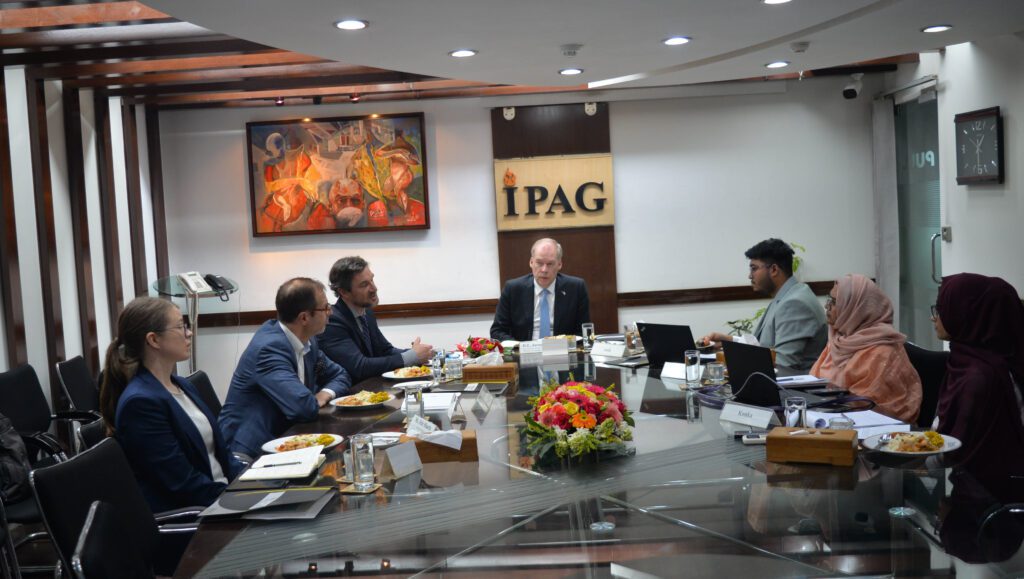
A high-level delegation from the Ministry for Foreign Affairs of Finland, including Deputy Minister and Under-Secretary of State for International Trade Mr. Jarno Syrjälä, Director for South and South-East Asia Mr. Veikko Kiljunen, Team Leader Mr. Ville Andersson, and Second Secretary Ms. Iiris Maatta visited the IPAG office in Bangladesh for an engaging discussion on the geopolitical landscape of Bangladesh, South Asia, and Southeast Asia, as well as exploring trade, investment, and cooperation prospects between Finland and Bangladesh.
Prof. Syed Munir Khasru
The Hindu
April 10, 2025
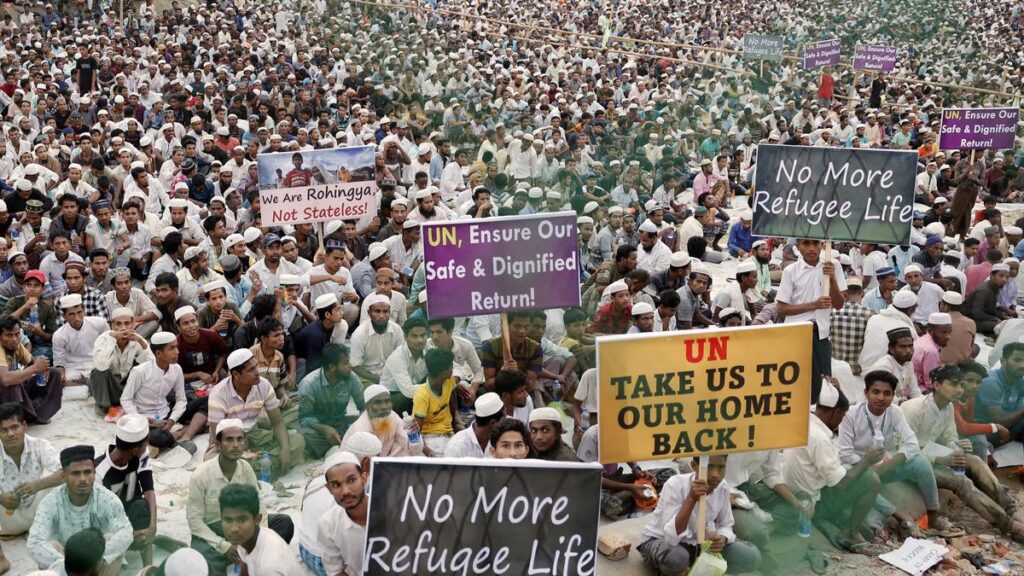
________________________________
During his four-day visit to Bangladesh in March, United Nations Secretary-General António Guterres visited Cox’s Bazar, the site of one of the world’s most overlooked humanitarian crisis. Over a million Rohingya refugees in Cox’s Bazar are teetering on the edge of catastrophe. Now, their fragile existence has made even more precarious by the Trump administration’s abrupt shutdown of U.S. Agency for International Development (USAID) funding.
USAID, historically the largest donor to humanitarian causes, spent about $40 billion a year globally. This has been slashed by the Department of Government Efficiency, led by billionaire and senior adviser to Mr. Trump, Elon Musk. It is ironic that the U.S., which in 2022 declared the atrocities against the Rohingya a ‘genocide’, signalling a commitment to respecting and protecting human rights, is today pulling the plug on the very aid that has kept over a million displaced Rohingya alive in Bangladesh, the second-largest recipient of USAID in South Asia.
Catastrophic consequences
The decision to slash USAID funding has sent shockwaves through the global humanitarian community. It has severed a vital lifeline and exposed refugees around the world to starvation, disease, and insecurity. For the Rohingya, who have already endured genocide, exile, and decades of statelessness, the consequences of the decision have been catastrophic. The World Food Programme, which relies largely on U.S. funding, has been forced to cut already meagre rations from $12.50 per refugee per month to an unsustainable $6. Medical aid has dwindled, with at least five hospitals shutting down, and sanitation programmes collapsing. This is a manufactured crisis, an ideological experiment in dismantling global aid, carried out on the backs of the world’s most vulnerable people.
A weak moral compass
Mr. Musk’s opposition to foreign aid is not new. He has long dismissed USAID as a “financial black hole.” His gleeful participation in its dismantling reveals a deeper ideological inclination: a tech billionaire’s fantasy of replacing structured aid with privatised, profit-driven solutions. Mr. Musk, like many libertarians, believes that markets solve problems more efficiently than governments. But hunger, displacement, and genocide are not market failures; they are moral failures. The idea that philanthropic ventures or ad hoc charity can replace long-term institutional support is naïve at best and reckless at worst.
The collapse of USAID-funded gender-based violence services and medical facilities has left vulnerable refugees, including women and children, without protection, medical care, and essential support, exposing them to heightened risks of exploitation and harm. The dismantling of USAID is not just about numbers; it’s about values. America’s moral compass is questioned when the world’s richest men believe that spending on starving refugees is wasteful. The problem at hand also reflects a broader shift in the U.S.’s role in the world: a retreat from global responsibility and the abdication of moral leadership. The images from Cox’s Bazar — a mother unable to feed her child, a clinic forced to turn away a dying patient, a child scavenging for scraps in a camp that once received international support — are not just distant tragedies. They are reflections of a world where indifference has become a policy and where the whims of the rich dictate the fate of the poor.
This retreat from aid will not go unnoticed. Historically, the U.S.’s foreign assistance has not been purely altruistic; it has been a crucial instrument of soft power. Cutting aid to the Rohingya refugees doesn’t just hurt the refugees. It also weakens America’s standing in South Asia and beyond. China, which has steadily increased its influence in Bangladesh, will step into the vacuum left by the U.S., leveraging economic aid as a tool for geopolitical leverage. China has already been mediating between Bangladesh and Myanmar for possible repatriation of the Rohingya refugees back home.
A huge vacuum
The question is, if the U.S. withdraws funding, can other nations pitch in? Unfortunately not. The U.S. alone contributed nearly half of the World Food Programme’s budget in previous years, making its sudden withdrawal a near-impossible burden to redistribute among remaining donors. This has resulted in drastic food ration cuts, leaving the Rohingya refugees on the brink of starvation. The European Union has pledged €32.3 million, and Japan and Italy have made commitments, but none of them can fill the gap left by the U.S.
The collapse of USAID sets a dangerous precedent. If the world’s richest country can turn its back on one of the most vulnerable groups, what would stop other nations from following suit? The Rohingya crisis is not just a test for those suffering, it is a test for human civilisation. As Mr. Guterres said at Coz’ Bazar, “We cannot accept that the international community forgets about the Rohingya”. He added that he will “speak loudly” to world leaders that more support is urgently needed.
The question is, will the world watch idly as humanitarianism is eroded? Or will it reclaim the compassionate values that once defined the world’s oldest and leading democracy, the nation which poured billions of dollars to revive war-torn Europe through the Marshall Plan in 1948?
Prof. Syed Munir Khasru
The Indian Express
April 5, 2025
https://indianexpress.com/article/opinion/columns/bimstec-summit-opportunity-9926497
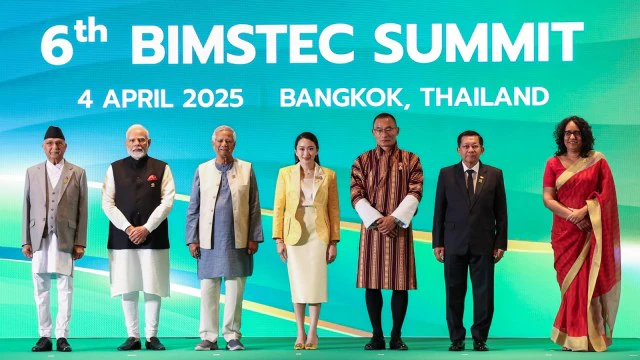
____________________________________________
As the sixth Summit of the Bay of Bengal Initiative for Multi-Sectoral Technical and Economic Cooperation (BIMSTEC) is underway in Bangkok, the regional grouping stands at a pivotal juncture. Under the theme “Prosperous, Resilient, and Open BIMSTEC,” member states will adopt the Bangkok Vision 2030 — a pioneering roadmap for future cooperation that promises to transform the Bay of Bengal region.
This summit, three years after the virtual Colombo Summit of 2022, is an opportunity to revitalise regional integration to address common challenges facing Bangladesh, Bhutan, India, Myanmar, Nepal, Sri Lanka, and Thailand. Despite its potential, the organisation has struggled to translate its ambitious vision into concrete outcomes. The Bangkok Vision 2030 presents a fresh opportunity to overcome past limitations and forge a more integrated, prosperous, and sustainable future for the region’s 1.7 billion people.
BIMSTEC’s journey over the past 25 years reflects the complex dynamics of regional cooperation in South and Southeast Asia.
The adoption of the BIMSTEC Charter at the fifth Summit in 2022 was a landmark development, providing the organisation with a formal institutional framework. The establishment of the BIMSTEC Secretariat in Dhaka in 2014 represented another significant milestone, enhancing the organisation’s capacity for coordinated action.
Progress has also been made in identifying priority sectors for cooperation. From the initial six sectors in 1997, BIMSTEC has expanded to cover 14 areas, with each member state leading efforts in specific domains. The BIMSTEC Free Trade Area Framework Agreement, signed in 2004, laid the groundwork for economic integration, though implementation has been slow.
Thailand’s chairmanship has introduced the PRO BIMSTEC vision, emphasising three key pillars: Prosperity, Resilience, and Openness. This framework aims to accelerate poverty alleviation, enhance preparedness for crises, and promote sustainable development through multi-stakeholder approaches. The “Prosperous” element focuses on promoting trade, investment, and sustainable development to address poverty. Under the “Resilient” pillar, emphasis is placed on increasing productivity in agriculture, livestock, and fisheries, as well as enhancing preparedness for health crises — a priority underscored by the Covid-19 pandemic. The “Open” dimension promotes sustainable tourism and broader regional connectivity.
Bangkok vision 2030: A blueprint for transformation
The Bangkok Vision 2030, to be adopted at the summit, represents BIMSTEC’s most comprehensive roadmap to date. Aligned with the United Nations’ Sustainable Development Goals (SDGs) and Thailand’s Bio-Circular-Green (BCG) economic model, the vision sets clear directions and priorities for regional collaboration over the next five years.
Key agreements to be signed at the summit include the agreement on Maritime Transport Cooperation, aiming to boost cargo and passenger transport across the Bay of Bengal. Additionally, the Memoranda of Understanding with the Indian Ocean Rim Association (IORA) and the United Nations Office on Drugs and Crime (UNODC) will establish new developmental partnerships, expanding BIMSTEC’s network of international collaborations.
The adoption of the Rules of Procedure for BIMSTEC Mechanisms will complement the BIMSTEC Charter, strengthening the institutional framework for regional cooperation. Furthermore, the Report of the Eminent Persons Group on the Future Direction of BIMSTEC, finalised after extensive consultations in 2024, will provide strategic guidance for the organisation’s evolution.
Missed opportunities and implementation challenges
BIMSTEC’s journey so far has been marked by several missed opportunities. The BIMSTEC Free Trade Agreement, initiated in 2004, remains unimplemented, highlighting the difficulties in translating political commitments into economic reality. Similarly, progress on connectivity initiatives has been slower than anticipated, with many infrastructure projects facing delays and funding constraints.
Political differences among member states have occasionally hampered cooperation, particularly in sensitive areas like security and counterterrorism. The organisation’s consensus-based decision-making approach, while ensuring equal voice for all members, has sometimes resulted in policy paralysis on contentious issues.
Institutional capacity constraints have limited its effectiveness. The Secretariat remains understaffed and underfunded compared to similar regional organisations. The absence of a dedicated financial mechanism for joint projects has meant that implementation often depends on individual member states’ resources and priorities.
From vision to implementation
For Bangkok Vision 2030 to succeed where previous initiatives failed, key actions are essential. Strengthening institutional capacity must be prioritised by enhancing the BIMSTEC Secretariat’s resources and mandate, establishing permanent working groups, and creating a dedicated fund for regional projects. Accelerating economic integration requires a renewed commitment to the BIMSTEC Free Trade Agreement, with clear timelines for negotiations on trade, services, and investment to boost intra-regional trade beyond its current level of less than 10 per cent.
Enhancing connectivity across physical, digital, and people-to-people dimensions is crucial, requiring the implementation of the BIMSTEC Master Plan for Transport Connectivity alongside the upcoming Agreement on Maritime Transport Cooperation. Strengthening sectoral cooperation in areas like climate change, disaster management, and public health is essential for building regional resilience, especially in light of lessons learned from the pandemic. Finally, engaging wider stakeholders — including governments, business communities, civil society organisations, and academia — would enhance the inclusivity and effectiveness of regional cooperation through forums and Track 1.5 and 2.0 initiatives.
A pivotal moment
The Sixth Summit and the Bangkok Vision 2030 come at a critical juncture. Amid global economic uncertainties, geopolitical tensions, and shared transnational challenges, effective regional cooperation has never been more important. The summit offers an opportunity to transform BIMSTEC from a forum for dialogue into an engine for regional development and integration. By addressing implementation gaps, strengthening institutions, and fostering inclusive cooperation, BIMSTEC can realise its potential as a bridge between South and Southeast Asia.
The success of the Bangkok Vision 2030 will ultimately depend not on the ambition of its goals but on the commitment of member states to translate vision into reality. As the leaders gather in Bangkok, they have an opportunity to chart a new course for regional cooperation — one that delivers tangible benefits to the 1.7 billion people who call the Bay of Bengal region home.
Prof. Syed Munir Khasru
The Indian Express
March 31, 2025
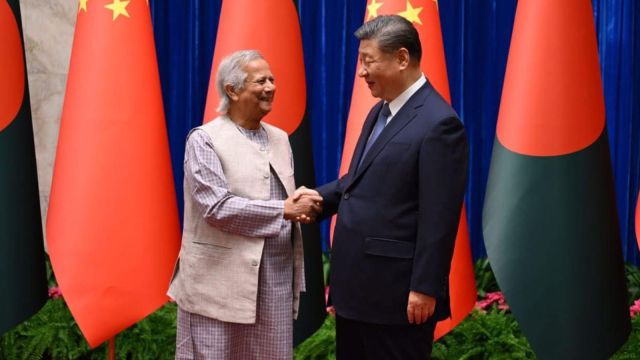
_____________________________________________________________
In a remarkable gesture, President Xi Jinping sent a special plane on March 26 to bring Chief Adviser to the Interim Government Muhammad Yunus to Beijing, signalling China’s deeper ties with Bangladesh. China has granted 100 per cent duty-free access to Bangladeshi exports and pledged to import more Bangladeshi goods. Bangladesh also secured a commitment of $2.1 billion in Chinese investments, loans, and grants during Yunus’s visit.
Once marked by a strained relationship, Pakistan is now making rapid diplomatic and economic inroads. Bangladesh has eased visa restrictions, trade has surged, direct flights have resumed and even military cooperation is on the horizon. As China and Pakistan build momentum, relations with India, once considered Bangladesh’s closest ally under the rule of the deposed Sheikh Hasina, seems to be struggling to find its footing. How did it come to this?
For nearly two decades, India’s Bangladesh policy was viewed through the prism of Prime Minister Sheikh Hasina being in charge. Hasina ensured stability in India’s northeastern states, cracked down on the cross-border insurgency and granted India transit rights. In return, New Delhi provided unwavering political and diplomatic support, even as Hasina became more high-handed and increasingly unpopular at home.
Hasina’s elections in 2014, 2018, and 2024 were controversial, with allegations of vote rigging and manipulation. The suppression of the opposition and human rights violations fuelled rising anti-India sentiment in Bangladesh. This was due to Delhi being seen as a “friend” of Hasina’s even when her popularity reached its nadir. Hence, when the student-led uprising ousted Hasina on August 5 last year, India had few alternative relationships in Dhaka and was in need of a fresh policy vis-a-vis the new regime.
In retrospect, Delhi should have placed its eggs in more than one basket and cultivated broader state-to-state and people-to-people relationships. There is a lesson in this episode, beyond the current moment about the inherent risks of relying on a single entity to represent an entire nation.
As Bangladesh underwent significant political upheaval, India hesitated. For the first two weeks, Delhi issued no statement beyond calling the situation “an internal matter”. A portion of the Indian media aggressively pushed a dubious narrative, linking the uprising to the Jamaat-e-Islami and Pakistan’s intelligence agency. Shiv Shankar Menon, India’s former National Security Adviser, dismissed this, saying the protests were a popular movement, not a foreign-backed conspiracy. Social media was flooded with videos falsely depicting anti-Hindu violence in Bangladesh. BBC Verify debunked these claims, revealing they were either manipulated or taken out of context. The fallout from Hasina’s ouster triggered emotional reactions on both sides of the border.
India sheltering Hasina and not responding to Bangladesh’s formal request for her extradition to face charges for alleged killings continue to be a bone of contention. Similarly, India’s urge for “inclusive elections” after dismissing the same as an “internal matter” when successive non-participative elections were held under Hasina has been dubbed in Dhaka as “double standards”. Emotionally charged narratives on both sides have been deepening the divide.
Some longstanding issues have festered for years, like the unresolved Teesta water treaty. As a result, Bangladesh’s northern region has been facing severe dry-season water shortages, loss of agricultural productivity, and vulnerability to floods. Despite being a lower riparian country with legal rights under international water law to receive a fair share, Bangladesh’s pleas have gone unheeded. Frustrated, Dhaka turned to China, signing a $1 billion MoU to implement the Teesta Comprehensive Management and Restoration Project, aimed at flood control, erosion prevention, and ensuring water availability during the dry season.
The trade imbalance remains a pressing concern, with Bangladesh facing a substantial deficit. In FY 2023–24, Bangladesh exported only $1.97 billion worth of goods to India, while imports from India soared to $14.01 billion, resulting in a stark $12 billion trade gap. Border security continues to strain ties.
With the upcoming BIMSTEC summit in early April 2025, both nations stand at a crucial juncture. Although a bilateral meeting between Yunus and Indian Prime Minister Narendra Modi seems unlikely, it is precisely in such moments that bold diplomatic gestures matter most.
India cannot afford to press pause on relations with Bangladesh until an election result it finds favourable materialises. The relationship is far too critical. Current tensions require strategic patience and sustained diplomatic effort as stakes are indeed high for both nations.
Prof. Syed Munir Khasru
Hindustan Times
March 24, 2025
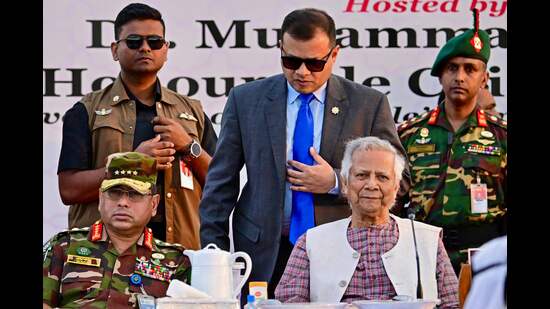
There are fresh rumbles in Bangladesh’s political sphere — a student-led party that emerged from the revolution that ousted the Sheikh Hasina government has become a bold voice for democratic reform, although it is quite unruly yet. As calls for elections grow louder, the tension between this urgency and the reforms needed continues to define this critical moment. Not long ago, Muhammad Yunus, the head of the interim government, met with political parties to build consensus regarding reforms. So far, there is no concrete agreement among the political parties on the charter of reforms.
The proposed changes to the Constitution aim to replace the core principles of nationalism, socialism, democracy, and secularism with new ideals — equality, human dignity, social justice, pluralism, and democracy. While these changes aim to address the long-standing grievances of the public, they are not without challenges. As Bangladesh transitions from decades of centralised authoritarian rule, it now enters uncharted territory, where outcomes remain unpredictable yet highly consequential.
Many have argued that the existing Constitution has outlived its utility, becoming a tool for authoritarianism rather than a charter for democracy. The nine-member constitutional reform commission, chaired by Bangladeshi American political scientist and writer Ali Riaz, has proposed significant changes, including restructuring the foundational principles. These principles, particularly secularism, are misaligned with the country’s identity given 90% of the population is Muslim, maintains Bangladesh’s attorney general, Muhammad Asaduzzaman. Other proposed reforms include the establishment of a bicameral legislature to improve representation and balance of power, limiting the prime minister (PM)’s tenure to two terms, and bringing back public referendums to give citizens a direct say in constitutional changes.
The constitutional reform commission itself is not without controversies. When Riaz was appointed as its head, critics questioned why an academic, and a US citizen affiliated with an American think tank, was chosen for this role. Riaz’s lack of background in law also has led to concerns about his suitability for the job.
The existing 1972 Constitution embodies ideals of the liberation war, which many believe has been diluted and weaponised by successive governments over the years. Principles like nationalism have been used to suppress dissent, while secularism has coexisted uneasily with Islam as the State religion since 1988, in many instances alienating both the Muslim majority as well as the religious minorities. Article 70, which prevents members of parliament from voting against their party, has stifled legislative debate and concentrated power in the PM’s hands. This provision reflects deeper issues of disunity and lack of internal democracy within political parties. The absence of term limits has allowed for prolonged, unchecked rule, exemplified by Sheikh Hasina’s uninterrupted 16-year-long tenure in office.
The 1991 transition from a presidential to a parliamentary democracy aimed to prevent the over-centralisation of power. It failed to achieve its purpose due to the uncontested dominance of the PM’s office, which both Hasina and Khaleda Zia’s regimes have illustrated. The political ecosystem remains entrenched in dynastic rule, with power often restricted to members of prominent political families. This reflects failure of political parties to embrace internal democracy or foster diverse leadership. Without genuine intent, which has to come from within the parties, cosmetic changes will not resolve these obstinate issues.
While Hasina’s tenure is credited with economic achievements like infrastructure development, Gross Domestic Product (GDP) growth, and poverty reduction, it was marred by increasingly authoritarian governance. Electoral processes were rendered farcical with the 2014, 2018, and 2024 elections characterised by Opposition boycotts, voter intimidation, and allegations of massive fraud. The abolition of caretaker government system in 2011 cemented Hasina’s grip on power, leaving the Opposition, particularly Khaleda Zia’s Bangladesh Nationalist Party (BNP) and Jamaat-e-Islami, open to political persecution and marginalisation.
BNP and Jamaat have expressed willingness to cooperate in varying degrees on getting the reforms done. However, while BNP has been stressing the urgency of holding general elections, arguing that reforms and elections are complementary processes, Jamaat has been advocating for holding elections after reforms have been undertaken. Hence, the timeline for the next general election remains uncertain, despite Yunus signalling that they could be held by the end of this year or next year. Moreover, new political forces entering the picture, including the anti-discrimination student’s movement, has signalled a break from the Awami League-BNP duopoly.
Amid these shifts, the push to establish multiculturalism as a foundational principle has gained momentum. The BNP has embraced this direction through its Bangladeshi nationalism ideology, advocating for greater inclusivity. Likewise, the Jamaat has exhibited a more non-communal stance, by protecting temples and churches in vulnerable times. These developments do offer hope toward unity and a break from the divisive politics that characterised the past. However, challenges remain, particularly given Jamaat’s Islamist history, which raises questions about its commitment to pluralism and democracy.
Constitutional reforms have been proposed also to realign Bangladesh with aspirations of the 1971 liberation war as well as the mass uprising of 2024, emphasising justice, inclusivity, and democratic participation. However, the proposal to rewrite foundational principles has sparked unease. Proponents argue that the existing principles are outdated for today’s Bangladesh. They believe that prioritising pluralism over secularism should acknowledge the country’s multicultural identity, while shift from nationalism to social justice would focus on individual rights over State dominance. Yet, whether these reforms will realise the promise of justice and democracy or again fall prey to the centralised power cycle is a question only time can answer.
Prof. Syed Munir Khasru
NIKKEI Asia
March 22, 2025
Link: https://asia.nikkei.com/Opinion/Water-and-women-The-inextricable-link-that-s-often-overlooked
__________________________________________________________
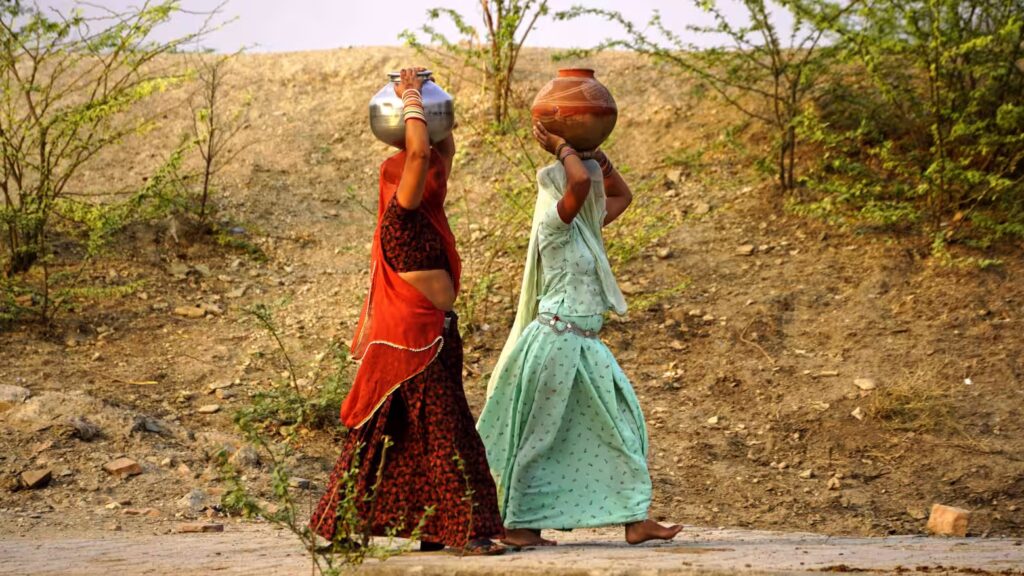
With International Women’s Day and World Water Day both observed this month, it is important to question whether the world is doing enough to acknowledge the contribution made by women to water resource management. The United Nations estimates that 2.2 billion people worldwide lack access to safe drinking water. Across the globe, women are disproportionately affected by water shortages, contamination and climate change-related disruptions.
Yet the U.N.’s sixth sustainable development goal (SDG) — to ensure the availability and sustainable management of water and sanitation for all) — is gender-blind, lacking clear indicators that demand data on gender-based accessibility.
Governments across the world also fail to acknowledge the gendered aspect of water, often leaving the voices of women out of decisions at policy level. This is despite the fact that research shows that women have a higher chance of choosing sustainable consumption and water management than men.
In 80% of households experiencing water shortages, women and girls are primarily responsible for collecting water. Building on that, women and girls worldwide collectively spend 200 million hours collecting water to feed, wash and tend their families as they are mainly in charge of taking care of the household. This lost time has significant economic implications, as it prevents women from engaging in income-generating activities and perpetuates cycles of poverty.
Climate change is further exacerbating these problems following which, by 2050, more than 5 billion people will experience severe water shortages, the U.N. forecasts. As a consequence, women in drought-prone regions will be forced to migrate in search for water, increasing their vulnerability to exploitation and violence.
More than 75% of Asia faces water insecurity, with 90% of the region’s population already on the brink of a water crisis. This growing threat is driven by a combination of factors, including population growth, urbanization, rising water pollution, excessive groundwater extraction, water-related disasters and the impact of climate change.
Access to clean water is not just an environmental concern but a critical issue tied to gender equality and public health across South Asia and Southeast Asia. In Southeast Asia, despite progress in expanding access to clean drinking water, women remain more vulnerable to unsafe water sources, facing higher mortality rates than men. In the case of Indonesia, women account for 29% of deaths linked to unsafe water, compared to 25% for men; while in Laos, the rates are 23% for women and 18% for men. In Vietnam, only 45% of the rural population has access to piped water that meets the standards of the Ministry of Health.
In Nepal, only 41% of surveyed schools had essential menstrual hygiene management facilities, such as covered bins, changing spaces and access to water, leading to dropouts and absenteeism. In India, rural women walk around 5 to 20 kilometers daily to collect water. In Bangladesh, nearly 3.3 million people still lack access to safe drinking water, with women and girls bearing the responsibility of collecting it. This daily burden has severe consequences. Girls are often forced to drop out of school to help with water collection, reducing their chances of obtaining an education and breaking out of poverty.
Addressing the global water crisis requires recognizing women as key stakeholders in water management. On that note, governments, international organizations and the private sector must take action to ensure that water policies are inclusive and gender sensitive.
Given that a large faction of the world lacks access to safe drinking water, investment in water infrastructure is essential, for which governments must prioritize development of piped water systems, community wells, and affordable filtration technology. Expanding infrastructure could save millions of women from spending hours fetching water each day. Second, education and awareness programs must be expanded to challenge social norms that force women into unpaid water-related labor. Water-related professions such as engineering, hydrology, and sanitation should be made more accessible to women through targeted scholarships and training programs.
Third, global commitments to funding water and sanitation initiatives must be strengthened. At present, achieving the SDGs for universal access to safe water and sanitation faces an annual shortfall of between $131.4 billion and $140.8 billion. Developing countries invest around $164.6 billion each year in the water sector, which is only 0.5% of global gross domestic product. Even with this funding gap, a significant portion of allocated funds remain unused, with an annual budget execution rate of about 72%, indicating inefficiencies in fund utilization.
Finally, climate policies must integrate water security and gender equality given that by 2030, water demand will exceed freshwater supply by 40%. Governments must develop climate-resilient water policies that protect the most vulnerable, including women living in drought-prone regions, flood-prone cities and conflict-affected areas.
Improving access to water sanitation and hygiene (WASH) could save 1.4 million lives each year worldwide while delivering significant economic benefits. Achieving universal coverage, particularly by ensuring everyone has access to a safely managed toilet, could generate $86 billion annually through higher productivity and lower health care costs. It could boost school and work attendance by three billion days each year, strengthening economic and social well-being.
Though women and girls are heavily held responsible for water resource management, they seldom make the cut when it comes to decision-making positions. Women make up less than 17% of the WASH workforce in developing countries, with an even smaller share engaged in policy and regulatory roles. Including women in water governance leads to fairer resource distribution and significantly improves project effectiveness, with studies showing a sevenfold increase in success.
Women in leadership drive progress by advancing policies that support women, increasing female hiring and regularizing their presence in decision-making. At least 30% female representation is needed to meaningfully influence decisions, making this a critical goal.
Gender equality benefits everyone, strengthening economies and communities, and improving crisis recovery. At the current rate, the U.N. estimates it will take nearly 300 years to achieve global gender equality, which is unacceptable for an issue affecting half the world’s population. Gender equality must become the norm, not the exception, in water resource management.
Prof. Syed Munir Khasru
South China Morning Post
March 19, 2025
Link: https://www.scmp.com/opinion/world-opinion/article/3302428/open-ai-access-will-make-once-exclusive-tool-empowering-all

Artificial intelligence (AI) has made quite the splash this year. Despite the many benefits its advancement can bring, a world where AI remains in the hands of a few elite corporations and nations will pose significant risks.
Without democratisation, only a limited number of players will be able to afford AI-driven solutions. This could lead to increased economic inequality, with wealthy organisations gaining disproportionate advantages in productivity and efficiency while smaller businesses and underprivileged communities fall further behind.
In such a world, AI’s potential to address global challenges, such as climate change, healthcare and education, would also be severely constrained, with solutions driven primarily by profit rather than societal good.
A centralised AI landscape could also exacerbate ethical concerns, with unchecked monopolies controlling vast amounts of data and decision-making power.
Ensuring AI’s accessibility is not just an economic necessity but a safeguard against deepening technological divides and global inequalities. Thus, that AI development is increasingly affordable and accessible represents a pivotal shift. With significantly reduced costs, AI is no longer an exclusive tool of major corporations but potentially a catalyst for global innovation, economic growth and problem-solving.
One of the most striking recent developments in AI democratisation is DeepSeek’s open-source R1 large-language model. While companies like OpenAI reportedly spent between US$80 million and US$100 million training their advanced GPT-4 model, DeepSeek managed to achieve impressive results with just US$6 million and 2,000 Nvidia graphics processing units (GPUs).
This dramatic reduction in cost signifies a transformative shift, proving powerful AI models are no longer confined to organisations with deep pockets.
The implications are profound: start-ups, researchers and educational institutions can now develop and train sophisticated AI models without requiring exorbitant resources. This shift not only diversifies the players in AI development but also fosters a more inclusive technological landscape where innovative solutions can emerge from different corners of the world, rather than being concentrated in Silicon Valley or Beijing.
A recent study by the Massachusetts Institute of Technology (MIT) observed the work of more than 1,000 materials scientists and found that those who used AI-powered tools saw a productivity increase. These researchers discovered 44 per cent more materials, which led to a 39 per cent rise in patent filings and a 17 per cent boost in downstream product innovation. The statistics illustrate AI’s ability to amplify creativity and efficiency, helping researchers and engineers solve complex problems at an unprecedented pace.
Industries ranging from healthcare and finance to agriculture and education stand to benefit from such AI-driven efficiencies. AI-assisted drug discovery, for instance, can accelerate the development of life-saving medicines, while AI-powered financial analysis tools can enhance investment strategies for individuals and small businesses.
Democratised AI is breaking down these barriers. One of the most promising examples is California’s partnership with Nvidia to train more than 100,000 students, faculty, developers and data scientists. By integrating AI education into community colleges and state universities, this initiative ensures AI literacy is not confined to elite institutions like MIT or Stanford but reaches students from diverse socioeconomic backgrounds.
As automation reshapes the job market, equipping people with AI skills ensures workers remain relevant, adaptable and capable of leveraging AI to enhance their careers rather than being displaced by it. Governments and educational institutions worldwide should take note and implement similar programmes to make AI education widely available.
Traditional AI development required vast capital investments, but with affordable open-source models, small businesses and start-ups in regions like South Asia, Africa and Latin America can now integrate AI into their operations.
For example, AI-driven agricultural analytics can help small farmers optimise crop yields with predictive weather modelling, while AI-powered translation services can enable businesses to expand into global markets. In the finance sector, AI-driven microfinance solutions can help underbanked populations gain access to credit, fostering economic growth from the ground up.
The key takeaway is that by providing open access to AI, we enable a broader spectrum of innovators to contribute solutions to pressing global challenges like climate change, poverty and healthcare disparities.
The advancements in AI affordability, accessibility and education point to a future where AI is not just a privilege but a tool that enhances global productivity and innovation. If nurtured properly, democratised AI can empower start-ups and small businesses with AI-driven insights and automation. It can accelerate scientific discovery by enabling researchers to solve complex problems faster. Additionally, AI can expand educational opportunities, ensuring AI skills are not limited to a select few.
Democratised AI can support economic development by making AI-driven solutions accessible to emerging markets and enhance global competitiveness, allowing diverse players to contribute to AI advancements. By recognising AI’s potential beyond its risks, policymakers, educators and business leaders can ensure AI remains an engine of inclusive progress rather than an instrument of control by a select few.
The democratisation of AI is not just a technological revolution – it is an economic and societal imperative. From increasing productivity in research to training the workforce of the future, AI’s impact will be felt across society.
To harness AI’s full potential, we must advocate for governance that supports open innovation rather than restricts it. Thoughtful policies, widespread AI education and continued investment in accessible AI technologies will ensure the benefits of AI reach everyone. If we succeed, AI will not be a tool of inequality but one of empowerment, driving a future where innovation knows no boundaries and progress is truly shared across the world.